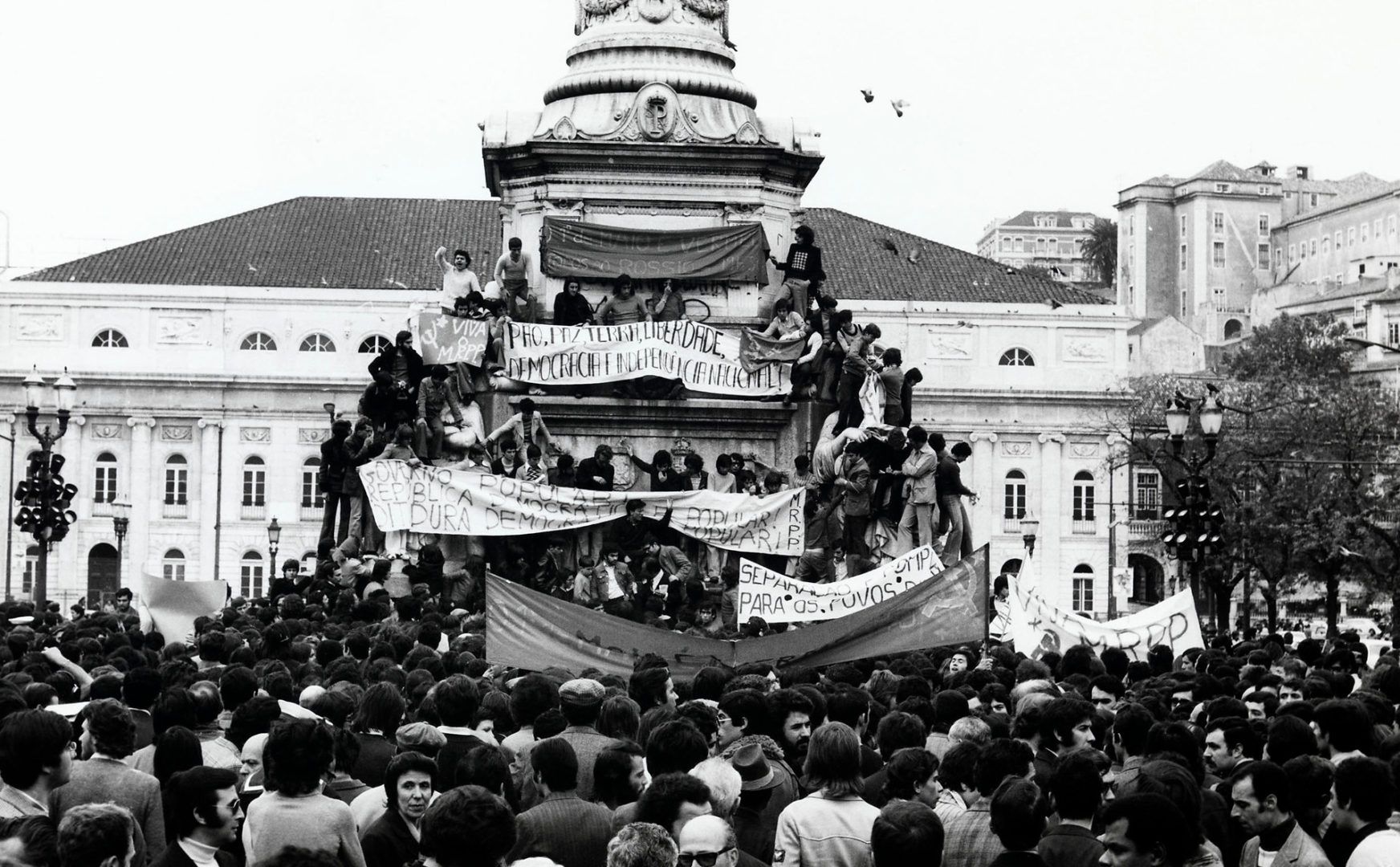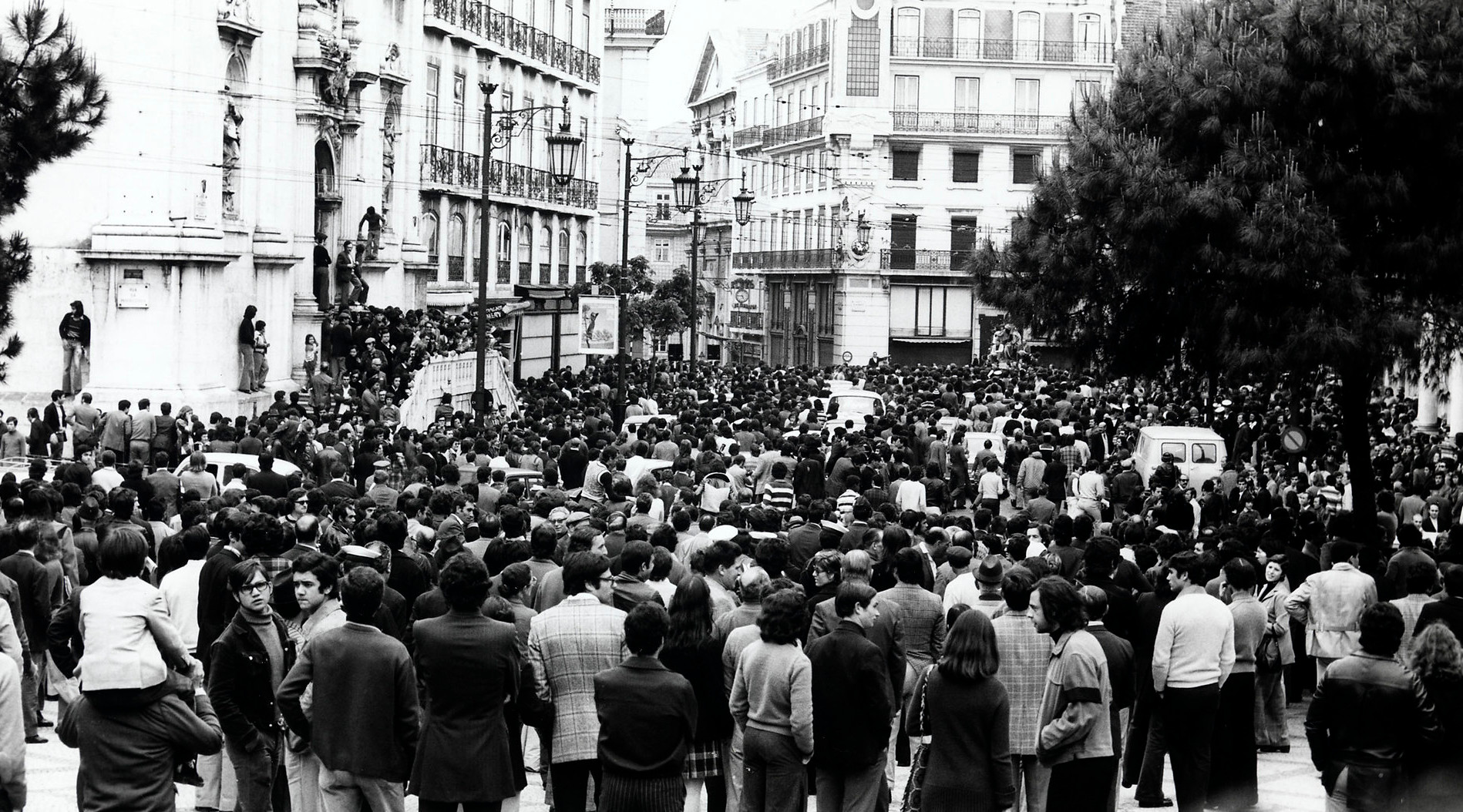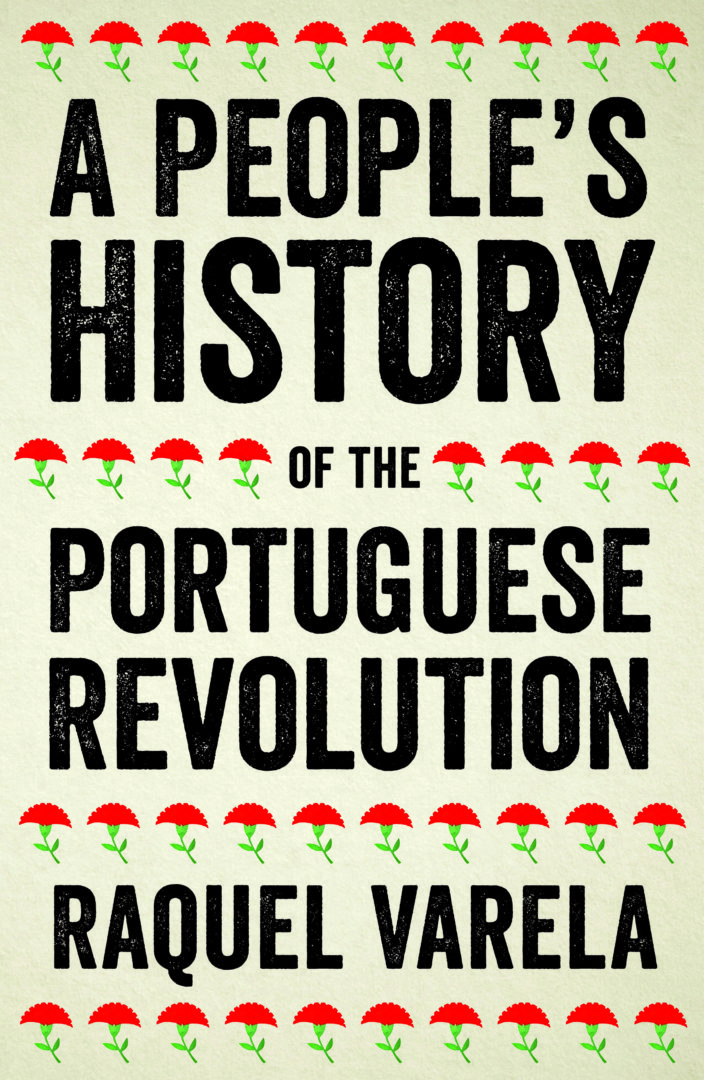Learning from Portugal’s Carnation Revolution
- April 25, 2019
People & Protest
The 1974-75 revolution began in Portugal’s African colonies and was lost in parliament, but for 19 months a true grass-roots democracy took hold of the country.
- Author
For those who want to overthrow the system that oppresses them, it helps to learn and remember and to be inspired by others who have tried to do the same.
A revolution took place in Portugal. We can date this precisely: between April 25, 1974 and November 25, 1975. The revolution was the most profound to have taken place in Europe since the Second World War. During those 19 months, hundreds of thousands of workers went on strike, hundreds of workplaces were occupied sometimes for months and perhaps almost three million people took part in demonstrations, occupations and commissions. A great many workplaces were taken over and run by the workers.
Land in much of southern and central Portugal was taken over by the workers themselves. Women won, almost overnight, a host of concessions and made massive strides towards equal pay and equality. Thousands of houses were occupied. Tens of thousands of soldiers rebelled.
Nobody predicted that so many would try quickly to learn and put into practice the ideas that explode from those who are exploited when they try to take control of their own destiny. Portugal’s so-called “Carnation Revolution” was not an illusion. We have to remember, celebrate and learn from Portugal.
“We are the people!”
While there were many momentous moments, probably the moment in which the Portuguese Revolution came closest to insurrection, that is, the moment in a revolution where the conquest of the State under the leadership of workers takes place, was to be found at São Bento on November 13, 1975. São Bento, in Lisbon, was the seat of the Portuguese parliament. It was here that the Constituent Assembly and the Government were being held hostage, surrounded by a mass of almost 100,000 people, the majority of whom were construction workers.
The scenario was almost unreal: it was Europe, in sunny Lisbon, the disproportionately large capital of Portugal, and the capital of the last colonial empire in history. If it were not for the helicopters, the hostages in the São Bento Palace, including the prime minister, would not even have received food or blankets. Outside there was a gigantic demonstration of workers who elbowed each other and literally stood on top of each other on the palace steps with red flags and banners, yelling slogans.
Suddenly, a cement truck entered the square and crossed the mass of demonstrators who surrounded the Assembly and, with smiles and raised fists, they moved aside to let it pass. On top, there were two men. One of them wore jeans and an open shirt, had a cigarette in his mouth and smiled triumphantly at the crowd. With one hand on the cement mixer and the other raised as a clenched fist he yelled along with the other demonstrators: “We are the people! We are the people! We are the people!”
The revolution’s African roots
The Portuguese Revolution began in Africa. Portugal, having acquired the first of the European colonial empires, clung to its empire long after other nations had relinquished theirs. Typically, the wars are described as guerrilla uprisings but it is important to emphasize the part played by workers. Freedom struggles began with a strike, which escalated into urban uprising in 1959, which took place in Pidjiguiti, Guinea-Bissau, a Portuguese colony on the coast of West Africa.
On the other side of Africa, in Mozambique, members of a mutual association for the Makonde people insisted, during the midnight hours of June 11, 1960, that they wanted to speak with the Portuguese authorities to negotiate the return of Makondes to Mozambique from Tanganyika. They desired “uhulu, that is the power to live in freedom without forced labor.” The war which drove the Portuguese out of Mozambique was launched the seeds of change from the Makonde homeland of the Mueda Plateau and this revolutionary movement was to be known as the Frente de Libertação de Moçambique (Mozambique Liberation Front, FRELIMO).
The Angolan Civil War was triggered on January 4, 1961, as an uprising against forced cotton cultivation. In February 1961, the Portuguese Army reacted to a strike of cotton workers in Lower Cassanje by napalm bombing of the population.
Portugal was the empire that used various forms of forced labor in the most systematic way and for the longest time. Widely denounced in the press and by international agencies, forced labor brought with it all the ailments of the society of which it was part: poverty, non-existence of social mobility, family break-ups, mere subsistence agriculture, extreme income inequality and racist political police. This polarization contributed to transforming the majority of the peasant population into avid supporters of the liberation movements.
Forced labor in the Portuguese Empire would last until 1974. As the workers were rooted to the land and labor was scarce, the only way to make people work in the mines of Mozambique, or the cotton plantations in Angola, was to make it compulsory. “Without gold there would be no South Africa and without Mozambique there would be no gold,” the historian Perry Anderson has aptly written. Without forced labor, I might add, there would be no Estado Novo (New State) in Portugal. British historian Basil Davidson notes that there was a total of 2,094,000 forced laborers in the Portuguese Empire.
Accumulation through forced labor could not exist without a dictatorship able to generate a workforce and impede production stoppages or the struggle for wage increases. It was the “primitive accumulation of capital” in the words of Karl Marx in one of the best-known chapters of Capital. It was a typical process of the dispossession of the peasants, forcibly torn from their lands and driven to work, mainly in the mines. And the accumulation (in gold!) was directly transferred to the vaults of the metropolis and ended up financing the large conglomerates that were at the forefront of the modernizing march of Portuguese capital, accomplished under the yoke of the Salazar dictatorship.
Although this modernization was delayed, in comparison to other capitalist countries, the proletariat had already developed sufficiently to contest modernization and engage in bitter social conflicts. In short, the dictatorship was necessary to harness the workforce in order to accumulate capital.
By early 1974, the PAIGC in Guinea was on the verge of victory and FRELIMO — the front for the liberation of Mozambique — had opened a new offensive. There was no prospect of winning the wars in Africa. The number of Portuguese dead, an estimated 9,000, was greater than in any conflict since the Napoleonic wars and the army was being blamed for these failures. Some officers were ashamed of wearing their uniforms in the streets of Lisbon. A crisis had been developing in the middle ranks of the army. In 13 years, nearly 200,000 men failed to report for enlistment and 8,000 deserted.
The story of the Portuguese Revolution often starts, incorrectly, with the Movimento das Forças Armadas (MFA) — the Armed Forces Movement. One should start with anti-colonial revolution in 1961, however, it was the MFA who opened up the gates of revolution.
Change from below
The Portuguese Revolution was a social explosion that US president Gerald Ford considered capable of transforming the entire Mediterranean into a “red sea” and causing the downfall of all of the regimes of southern Europe like dominoes. We can argue today that it began a wave of resistance in southern Europe that delayed the implementation of neoliberal plans attempted from 1973–75 until the crisis period of 1981–84. Measures which survived include the nationalization without compensation of banks and large companies, the birth of the welfare state and social security, the agrarian reform of large estates in the south of the country and the worker management of 300 companies.
These measures were not realized by state decree or by governmental action, as some have tried to frame them, but from below, through people assembling and organizing. The workers in the banks stopped the flight of capital, before they were nationalized. It was the strikes in the major companies that forced salary increases and price freezes; hospitals and schools were occupied and democratically run; public transport was under the control of workers and users, who decided to extend this to peripheral areas and to reduce fares; thousands of empty houses and apartments were occupied by residents (usually through residents’ commissions and often with the help of soldiers), the land was occupied in the south and center by agricultural workers, which more than tripled productivity and employment.
In other words, it was not only the results but the entirely democratic way in which they were achieved in this “new country,” to use film-maker Sérgio Tréfaut’s fitting term, which makes the Portuguese Revolution an extraordinary case study of “change from below.”
And this revolution took place in the midst of the international oil crisis of the 1973, which caused a dramatic fall in Portugal’s GDP. Economic growth fell from nearly 11 percent in 1972 to -5.10 percent in 1975. The crisis precipitated falling investment that in turn led to a drastic increase in redundancies. With the unemployment rate doubling from 2 to 4 percent, workers responded by occupying factories and companies, bringing it under worker control. The expansion of social rights in 1974-75 can be traced back to these occupations.
During the revolution, the unemployment rate doubled from 2.1 to 4 percent, and the reaction to redundancies — the occupation of factories and companies — would be one of the factors that explains the existence and development of workers’ control during the revolution, and is perhaps the most significant reason for the progressive expansion of social rights during the Revolution.
The defeat of grassroots democracy
The Carnation Revolution is one of the outstanding revolutions of the twentieth century: because the spread of the forms of power (commissions of workers, residents, soldiers, the equivalent of councils, elected from the base, in plenary and with representatives who can be recalled at any time) which threatened the regimes, and their assumptions of authority. The grass-roots democracy that was in force, and centered on places of work and housing, allowed something like three million people to decide, not by putting a vote through a ballot box every four years, but day by day, on how society was to produce, and be managed.
Never have so many people decided so much in Portugal as between 1974 and 1975. This is the legacy of the revolution.
It is one of the most important revolutions of the entire twentieth century: by the extension of duality powers (committees of workers, residents, soldiers). It is, from the point of view of the parallel to the State, of a historical process that bears many similarities to the German revolution after the First World War, Italy through two years in 1919–1920 (known as the “biennio rosso”), with the 1956 Hungarian revolution and with the Chilean experience in the early 1970s. It is also, and this is another important characteristic, a revolution in the metropolis that happens by virtue of anti-colonial revolutions in the Portuguese colonies. It’s a social revolution, which becomes a democratic revolution.
What began on 25 April – a classic coup d’état – unleashed a social revolution in terms of ways of meeting and organizing (threatening and resulting in changes in the relations of production). In a few days or weeks, it was practically assured that the political regime of dictatorship would be replaced by a more benevolent regime, one which would allow, inadvertently perhaps, the working class and the popular and student sectors to enter (without fear), onto the stage of history.
Soon these actors would jump ahead of this army and would lead the revolution from the front, leaving the MFA behind, trying to recompose the State. The Carnation Revolution, which cannot be summed as the day of the coup, April 25, (as recently has been done, pressing only to celebrate the day of the coup and not the whole process), but as a historical process of almost two years, is the most democratic moment in the history of Portugal.
The defeat of the revolution put an end to fundamental democracy, particularly in the barracks, factories, companies, schools and neighborhoods. There’s nothing unusual about this. But it may be that Portugal is the first example of the success of a defeating revolution by replacing it with establishment of a “representative” democratic regime. Representative democracy had to defeat grassroots democracy.
In 1974–75, while in special moments unions represented their memberships, they were also a buffer, one which became a channel for owners and their allies, committed to rebuilding the State, and opposing, with internal tensions, bodies of that challenged the power, namely, the committees of workers, residents and soldiers.
In 1974-75 they witnessed the joy of the majority of those who lived here. One of the characteristics of the photos of the Portuguese Revolution is that people are almost always smiling. It was not by chance that Chico Buarque, one of the most famous artists of Música Popular Brasileira (Brazilian Popular Music), sang: “I know that you are celebrating, man”
Raquel Varela’s “A People’s History of the Portuguese Revolution” is available from Pluto Press
Source URL — https://roarmag.org/essays/learning-from-portugals-carnation-revolution/




